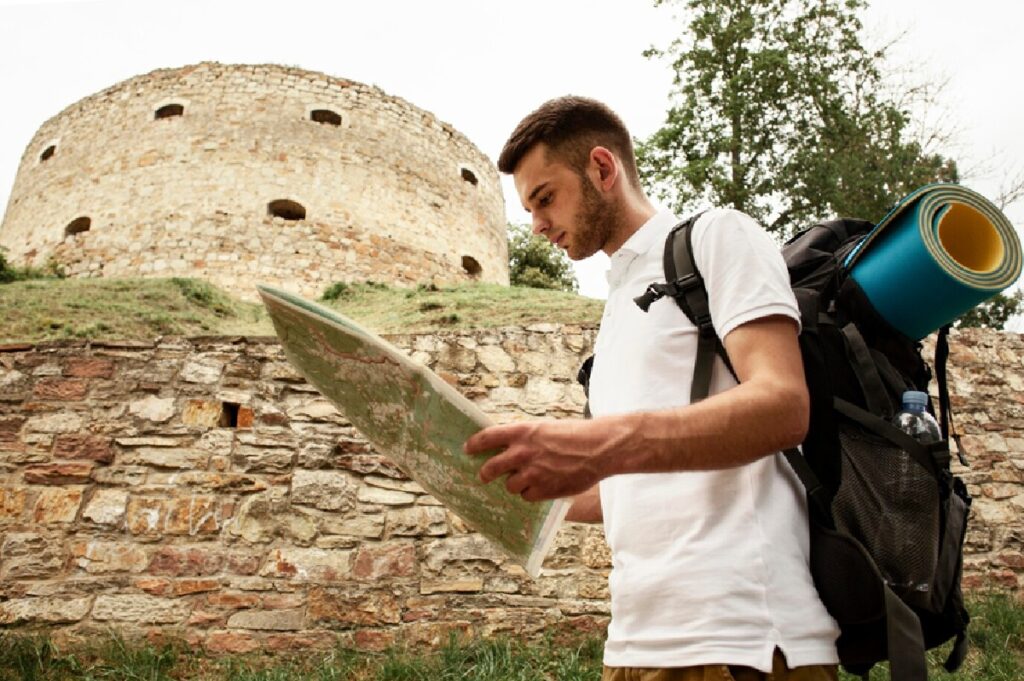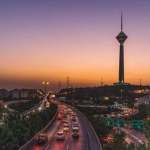Tucked in the heart of southern Iran, Shiraz conjures images of fragrant orange blossoms, ancient poetry, and timeless gardens. Known for its cultural elegance and laid-back rhythm, Shiraz invites travelers to slow down and savor. Beyond the wine of ancient verses and marble tombs of poets, the city cradles spaces that echo a quieter grandeur — places like Afif Abad Garden, where art, history, and serenity weave together.
Not your average Persian garden, Afif Abad stretches beyond floral beauty. It’s a harmonious mix of elegance and edge — combining manicured landscapes with a stately palace-turned-museum that showcases both royal opulence and military grit.
What Makes Afif Abad Special?
Unlike many historical gardens, Afif Abad plays a double role. On one hand, it’s a botanical haven — with blooming orange trees and symmetrical waterways. On the other, it’s a rich archive: a military museum and a royal artifact display tucked inside a Qajar-era mansion. This unique contrast makes it one of Shiraz’s most fascinating stops.
In this article, we’ll take you on a walk through Afif Abad’s layered past, admire its architectural charm, explore the museums housed within its palace, and provide practical travel tips. By the end, you’ll understand why this garden is far more than a pretty place.

A Glimpse into Afif Abad’s Rich History
The garden traces its roots back to the Safavid era, once known as Golshan Garden. Though its structure evolved over centuries, it found new life during the Qajar dynasty in the mid-19th century when Mirza Ali Khan Qavam al-Molk, a prominent Shirazi noble, rebuilt it into the estate we see today.
The Qavam Family’s Legacy
Mirza Ali Khan was part of the influential Qavam family, whose fingerprints are all over Shiraz’s architectural gems. With a blend of political power and aesthetic taste, the family turned Afif Abad into both a private retreat and a statement of cultural pride.
Pahlavi Era and Transformation
During the Pahlavi dynasty, the estate briefly entered royal possession and was even gifted to Farah Pahlavi, the last empress of Iran. Her touch brought European elements — think Versailles-style mirrors and chandeliers — into the garden’s design. Eventually, the Iranian military took ownership and converted the palace into a museum that chronicles the country’s martial past.
A National Heritage Site
Today, Afif Abad is recognized as a national heritage site, preserving both its natural grace and historical gravity. Visitors don’t just walk into a garden here; they step into centuries of evolving Iranian identity.
Architectural Marvels and Persian Garden Design
Like most Persian gardens, Afif Abad follows the traditional Chahar Bagh format, a quadrilateral garden divided by water channels that symbolize the four rivers of paradise. This geometric layout represents balance, order, and spiritual harmony.
Explore affordable travel options with our Iran Budget Tours and discover the beauty of Iran
The Majestic Palace/Mansion
Architectural Fusion
The mansion is a study in blended heritage. Its base form draws on Achaemenid boldness, with Sassanid curves and Qajar elegance, while inside you’ll spot subtle European influence from its Pahlavi-era redecoration.
The Grand Entrance and Facade
You’ll notice columns inspired by Persepolis, intricate tilework, and a broad balcony perfect for watching the sun wash over the garden. The symmetry in the facade feels calculated, yet inviting.
Exquisite Interior Details
Once inside, the mansion reveals rich mirror mosaics, stucco flourishes, and oil paintings. The walls seem to whisper tales of aristocratic evenings and poetic salons.
Wooden Ceilings
The wooden ceilings deserve special mention. Carved, painted, and polished — they bring warmth and organic depth to the rooms, contrasting the reflective glitter of the mirrors.
The Inviting Water Features
Canals and Streams
True to Persian garden tradition, narrow waterways crisscross the grounds. They cool the air, reflect the foliage, and bring a calming soundtrack to your stroll.
The Grand Pool (Howz)
At the garden’s center lies a grand rectangular pool, doubling as a mirror for the mansion’s facade and a gathering spot for families and photographers alike.
Fountains
Gurgling gently, the stone fountains add rhythm to the silence. Their steady spray brings motion to a space designed for stillness.
Lush Flora and Fragrant Blossoms
Types of Trees
You’ll find an orchard’s worth of cypress, pine, bitter orange, and plum trees. The shade they offer isn’t just physical — it’s emotional, too.
The Famous Orange Blossoms (Baharnarenj)
If you visit in spring, the scent of Baharnarenj will linger in your memory for years. Their sweet, heady perfume has become a symbol of Shiraz itself.
Seasonal Flowers
Afif Abad changes outfits with the seasons: tulips and hyacinths in spring, roses in summer, and chrysanthemums in fall. It’s never the same garden twice.
Beyond the Garden: Exploring the Museums
Iran’s Military Museum (Ground Floor)
- A Comprehensive Collection
Housed on the ground floor of the mansion, this museum showcases weaponry across dynasties — from the Safavid blades to Pahlavi firearms. - Types of Exhibits
Expect to see antique swords, ornate rifles, ceremonial cannons, and even armored personnel carriers. The contrast with the delicate garden outside is striking. - Historical Context
Each section provides not just hardware but narratives — explaining how Iran’s military philosophy evolved, and how it intersected with politics, art, and regional dynamics.
The Museum of Royal Artifacts / “Ebrat Museum” (First Floor)
- Former Royal Chambers
Upstairs, rooms once used by nobles now hold treasures: reading salons, grooming quarters, and lavish dining halls, preserved with their original furnishings. - Pahlavi Era Memorabilia
There’s a piano said to belong to Farah Pahlavi, elaborate Persian carpets, French-style armchairs, and crystal chandeliers — quiet remnants of royal leisure. - Art and Decorations
Walls are lined with portraiture, calligraphy, and rare miniature paintings. It’s less a museum and more a time capsule.
Experience Afif Abad: What to See and Do
- Stroll Through the Serene Gardens
Take your time. Listen to the rustle of leaves, smell the citrus in the air, and feel the crunch of gravel underfoot. There’s a rhythm here that resets the soul. - Explore the Mansion and Its Museums
Allocate time for both museums. Whether you’re drawn to military history or interior design, each wing offers something different. - Visit the Traditional Tea House
Hidden near the eastern side, the tea house serves steaming black tea in gold-rimmed glasses. The walls are painted with scenes from the Shahnameh, adding a mythic touch to your break. - Discover the Historic Bathhouse
If open during your visit, the restored bathhouse gives insight into Iran’s bathing culture. Marble slabs, mosaic tiles, and domed roofs tell their own story. - Photography Opportunities
Bring your camera. From sun-dappled courtyards to reflections in the pool, there are dozens of postcard-worthy angles. - Shop for Souvenirs Near the exit, small shops sell miniature paintings, hand-woven bookmarks, and books on Iranian history — perfect keepsakes.
Planning Your Visit: Essential Information for Tourists
If you are planning a trip to Shiraz, visiting Afif Abad Garden should be high on your list. To make the most of your experience, it helps to know a few key details before you go. Whether you’re a history enthusiast, a photographer, or simply looking for a peaceful retreat, this destination offers a thoughtful combination of cultural depth and natural beauty.
Location and Address
Afif Abad Garden is located on Afif Abad Street, in the northwestern part of Shiraz, Fars Province, Iran. Its central location makes it easy to reach from most areas of the city.
Best Time to Visit Afif Abad Garden
The most popular time to visit is during spring, especially between March and May. This season offers comfortable weather, and the garden is at its most fragrant due to the blooming orange blossoms. Autumn, from late September through November, is also an excellent time to visit. The weather remains mild, and the trees begin to change color, adding a different kind of charm to the scenery. Early mornings are usually the quietest and provide the best lighting for photography.
Opening Hours
The garden typically opens around eight in the morning and closes by seven in the evening. However, these hours may vary slightly depending on the season or national holidays. It is advisable to check in advance or confirm with a local source on the day of your visit.
Entrance Fee
For international travelers, the entrance fee is modest and typically ranges from a few to several U.S. dollars. Prices are subject to occasional changes, so it’s a good idea to carry some cash and ask about the current rate upon arrival.
Estimated Time for Visit
Most visitors spend between one and two hours at the garden. This gives enough time to walk through the grounds, explore the museums, and stop for tea or photography.
Available Facilities
Visitors will find several helpful amenities on site. There is a traditional tea house that offers refreshments in a shaded, relaxing atmosphere. Public restrooms are available, and there are seating areas throughout the garden. Occasionally, vendors set up small booths offering handmade crafts, books, or locally made souvenirs. On some days, visitors can rent traditional clothing for photo sessions in the garden, which adds an authentic cultural touch to the experience.
Getting to Afif Abad Garden
Reaching Afif Abad Garden is relatively simple thanks to Shiraz’s manageable size and growing transportation network. There are a few different options depending on your preferences and travel arrangements.
By Metro
Although the Shiraz Metro is not as extensive as those in larger cities, it continues to expand. The closest available station to Afif Abad Garden is likely Avini Metro Station. From there, you will need a short taxi ride to reach the garden entrance, which generally takes around ten to fifteen minutes.
By Bus
Public buses operate regularly throughout Shiraz, and several lines pass near Afif Abad Street. You can inquire locally for the best route based on your starting point. While affordable, buses may become crowded during rush hours and are best used if you are familiar with the routes or traveling with a guide.
By Taxi or Ride-Hailing Apps
Private taxis and mobile ride-hailing apps such as Snapp and Tap30 are widely used across Shiraz. These apps function similarly to Uber and allow you to request a car directly to your location. Entering “Afif Abad Garden” or its Persian name into the app will ensure that drivers know your destination. Most drivers are used to tourists visiting this location.
By Private Car or Tour Package
If you are part of a guided tour or have arranged a private driver, Afif Abad Garden is usually one of the scheduled stops. This option is convenient if you prefer door-to-door service and want to combine your visit with other attractions in the same area.
Nearby Attractions to Explore
One of the advantages of visiting Afif Abad Garden is its proximity to several other important cultural and historical sites in Shiraz. You can easily spend an entire day moving between these landmarks, each offering a different facet of Persian heritage.
Eram Garden
Often compared with Afif Abad for its beauty and historical significance, Eram Garden is located a short distance away. It features towering cypress trees, colorful flower beds, and a beautiful Qajar-era mansion. The garden also serves as a botanical research center for Shiraz University.
Tomb of Hafez (Hafezieh)
This site honors one of Iran’s most beloved poets, Hafez. The tomb is surrounded by peaceful gardens and marble pathways. Many visitors come here to read or reflect quietly, while locals often recite his poetry aloud as part of a longstanding cultural tradition.
Tomb of Saadi (Saadieh)
Not far from Hafezieh is the tomb of Saadi, another major literary figure in Persian literature. The grounds combine a mausoleum, small museum, and garden space. The atmosphere is slightly more reserved, but equally meaningful to those interested in Iran’s poetic history.
Vakil Complex
Located in the historic core of Shiraz, the Vakil Complex includes a bazaar, mosque, and bathhouse—all built during the Zand dynasty. It offers a blend of commerce, architecture, and religious art. The bazaar in particular is a lively place where visitors can purchase spices, textiles, and traditional crafts.
Qavam House (Naranjestan-e Ghavam)
A smaller but exquisitely detailed site, Qavam House is known for its elegant mirror work, painted ceilings, and orange-scented courtyard. The interior is richly decorated, providing a more intimate view of upper-class life during the Qajar era. It makes for an ideal follow-up visit after seeing Afif Abad.
Conclusion
Afif Abad Garden is more than a scenic escape — it’s a layered journey into Iran’s cultural, artistic, and military past. With its blooming trees, reflective pools, and grand halls filled with echoes of history, it offers something rare: a place where you don’t just observe — you feel. Whether you’re a curious traveler, a history lover, or just someone seeking quiet beauty, this garden welcomes you to pause, look closer, and discover.


























